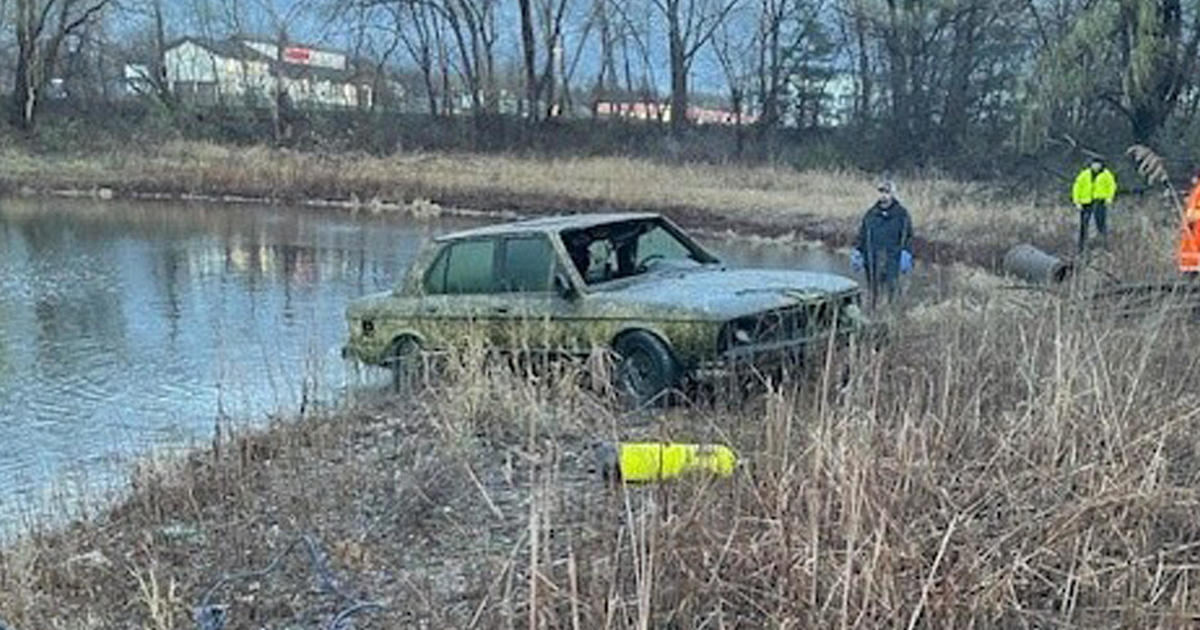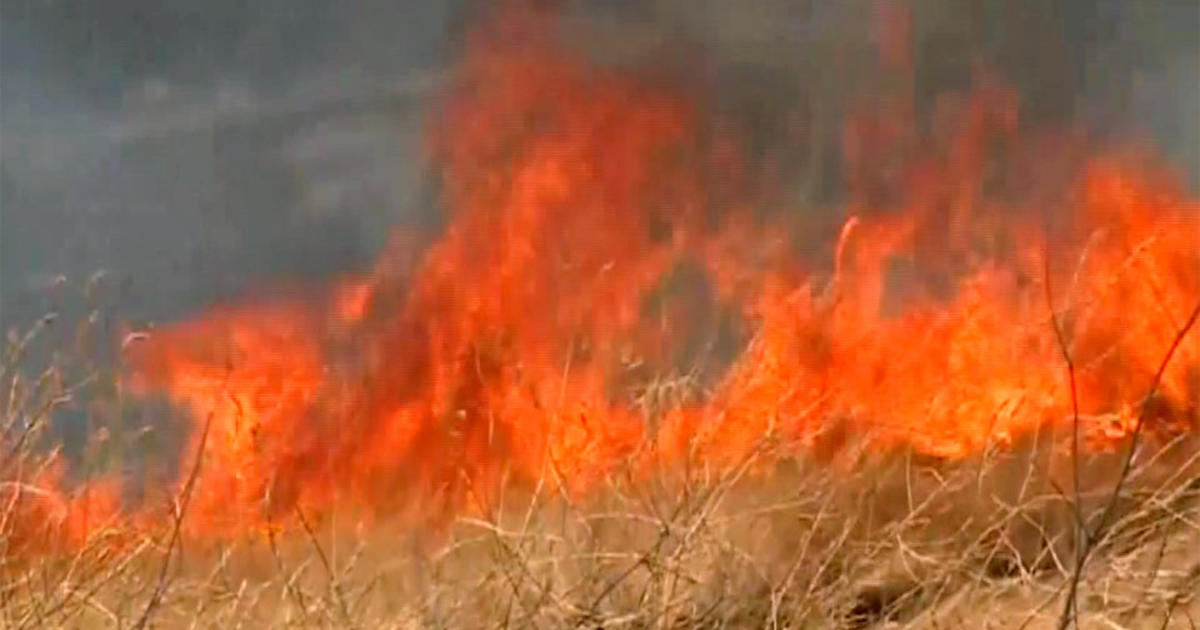Winter Snows Bring Spring Flood Risk In Heartland
TRAVERSE CITY, Mich. (AP) -- As a winter that has pelted much of the nation with unusually heavy snowfall slogs into the home stretch, some heartland communities are readying sandbags, pumps and their frayed patience for what forecasters say could be a flood-soaked spring.
Flat, frosty Minnesota and the Dakotas, no strangers to overflows during the annual thaw, are all but certain to be inundated again as waterways become engorged with melted snow and runoff from saturated soils, the National Weather Service says. But this winter's snowy barrage has enlarged the danger zone in the nation's midsection, with prospects for flooding rated high or above average in river basins from northern Montana to St. Louis.
The lower Great Lakes could be another trouble spot. Melting snow and heavy rain threatened flooding in all 88 of Ohio's counties last week. The town of Findlay (population 36,000) was submerged, and waters up to 4 feet deep destroyed a building at Cleveland's zoo and killed a peregrine falcon. An overflow creek forced about 200 people to be evacuated from their homes in the Lake Erie community of Sunset Bay, N.Y.
Much of the eastern U.S. has gotten more snow than usual, putting eastern New York state and southern New England at an elevated flood risk, according to the weather service. Connecticut has gotten more than 80 inches. The snowpack ranges from 10 to 20 inches in Rhode Island, which last year suffered its worst flooding in two centuries because of torrential rainstorms.
In the South, where snow wreaked havoc with the Super Bowl in Texas, gave Atlanta its first white Christmas in decades and whitened North Carolina's sugary beaches, it has melted easily into ground parched by prolonged drought.
"We like to get snow because it recharges our soil moisture, but it just doesn't last long," said Gary McManus, associate state climatologist in Oklahoma, where February storms dumped more than 2 feet of snow. A record-breaking 27 inches blanketed the town of Spavinaw in a single day, but the moisture content was so low, it was the equivalent of just 1.2 inches of rain.
The situation is different across much of the north-central region, where the ground is "frozen, water-saturated and snow-covered" and tributary streams are swollen, the weather service said in a recent report. Computer models suggest the snowpack's moisture level is among the highest in six decades. Much will depend on how quickly it melts and how much rain falls in March and April, the agency said, but conditions are ripe for moderate to severe flooding along the upper Mississippi River -- from its headwaters near St. Paul, Minn., to St. Louis.
The report said St. Paul has a 95 percent chance of major flooding. Prospects are equally grim in Fargo, N.D., where forecasters said Red River overflow likely will submerge parts of downtown, and Grand Forks, about 70 miles to the north. Severe flooding also is expected along the James and Big Sioux rivers in South Dakota.
The U.S. Geological Survey has placed additional gauges in the region's streams to improve tracking of water levels, said Robert Holmes, its national flood coordinator.
The scenario is becoming wearily familiar in the Red River basin, where precipitation has been above average since the late 1990s. Fargo flirted with disaster again last year after sustaining a $100 million punch in 2009, when the river exceeded flood stage for an unprecedented 61 days and thousands of people were evacuated.
"It's been something of a siege," said Greg Gust, a weather service meteorologist in Grand Forks. In the roughly 60 years since the weather service has monitored river levels in the basin, there have never been three consecutive years of severe flooding, he said.
Volunteers have begun filling sandbags in Fargo, hoping to stockpile 3 million. In other vulnerable locales, officials are testing flood-control equipment, holding planning sessions and going over checklists with memories of deluges from a few years ago fresh in their minds.
Henderson County, Ill., is still recovering from a flood in 2008, when the Mississippi punched through a 17-mile-long levee, swamped the tiny town of Gulfport and damaged several grain elevators serving corn and soybean farms. It took the state until this month to kick off a long-promised buyout of ruined homes, county board Chairman Marty Lafary said.
Coral Seitz, the county's emergency management director, oversaw demolition of 101 houses and recalled the misery of owners who pleaded to keep their dwellings intact, even though water, mud and mold had left them uninhabitable.
"I held a lot of hands and had a lot of people cry on my shoulder," Seitz said.
The levee has been shored up and officials inspected it last fall, she said. Local leaders will meet soon to make preparations for this spring's flood threat. The county has 169,000 unfilled bags and plentiful sand.
"I know one thing -- we're going to be a lot better prepared next time and we're not going to ask anything from anybody," Lafary said.
In Grafton, Ill., a tourist village about 40 miles north of St. Louis at the convergence of the Mississippi and Illinois rivers, 20 homes and businesses were covered and its main road cut off during the 2008 flood. The town was spared last year, and Mayor Tom Thompson is hoping for the best this spring. But extra sand has been ordered and a planning committee formed, just in case.
"I would say there's no doubt we have to be a little more on edge this year because of the significant snowfall to the north," Thompson said.
The snow already has melted in Cedar Rapids, Iowa, where floodwaters three years ago swallowed up 10 square miles and more than 5,000 homes. For now, the risk is slight and expected to remain so if spring rains hold off long enough for the ground to dry, city public works manager Craig Hanson said.
Still, he's taking no chances. He has checked the sandbag-loading machine and the city's 48 pumps that propel floodwaters back into the river, and has practiced deploying artificial flood-control walls. More than 1,000 truckloads of sand are available.
"What happened in 2008 was horrific, but we do not expect that kind of flooding this year," Hanson said. "Then again, weather patterns can change."
Businesses are preparing as well. Anheuser-Busch says it recently shut down beer production for a day at its brewery in Cartersville, Ga., and instead produced 25,000 cases of canned water for donation to flood-stricken communities.
"Of course, our hope is that this water will never be needed," said Rob Haas, the brewery's general manager.
(© Copyright 2011 The Associated Press. All Rights Reserved. This material may not be published, broadcast, rewritten or redistributed.)



